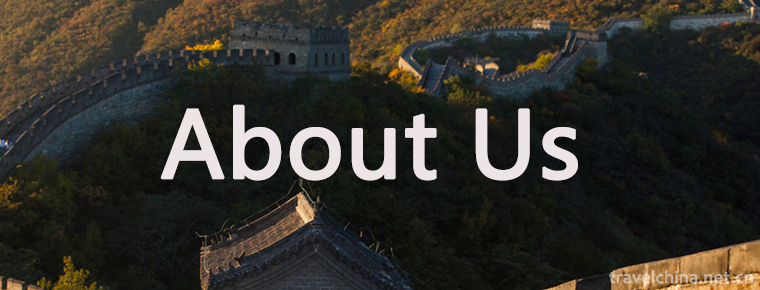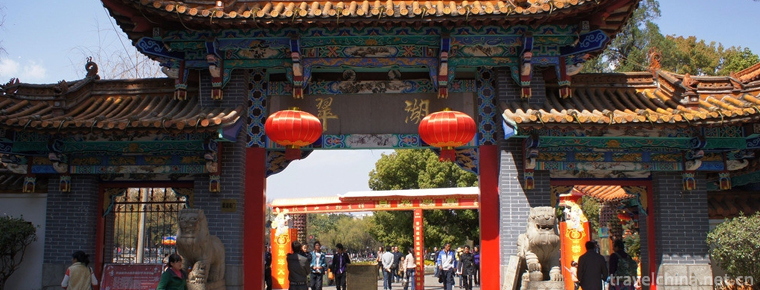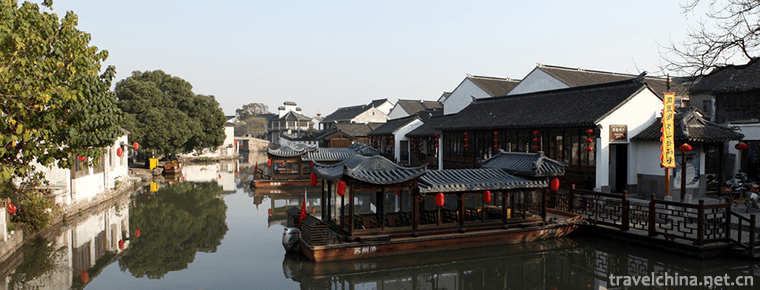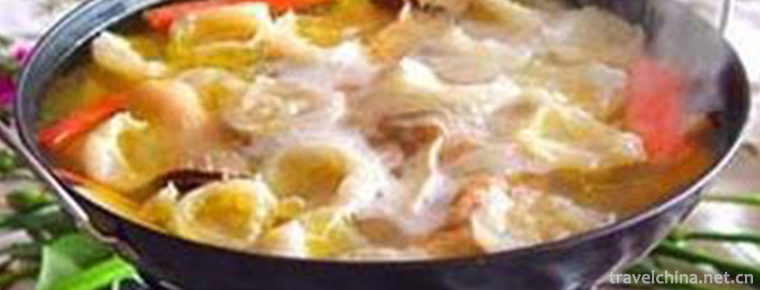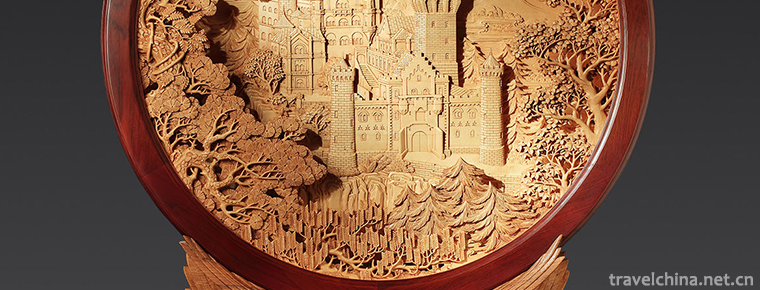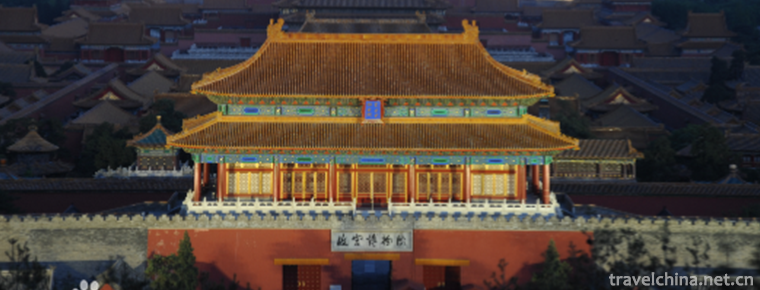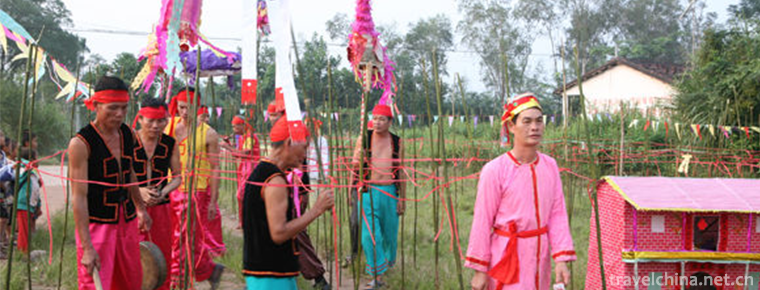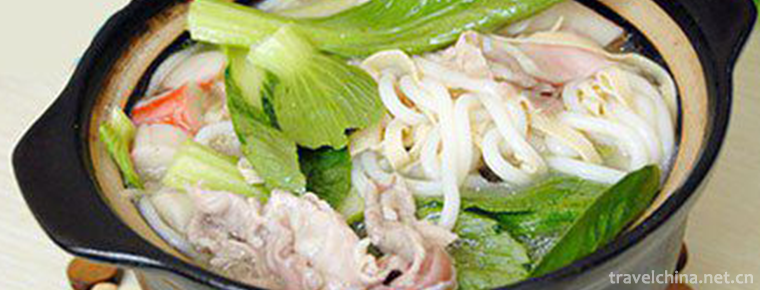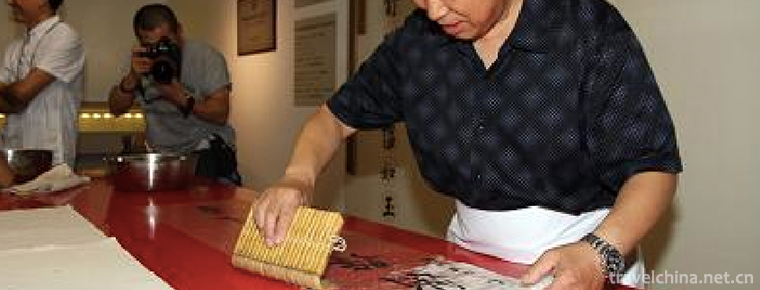Lusheng Dance of Lahu Nationality
Lusheng Dance of Lahu Nationality
Hulusheng dance is a representative of the Lahu nationality. It mainly spreads in busy Nuo Township, Mengmeng Township, Dawen Township, Mengku Township and other Lahu villages in Shuangjiang Lahu Wa Autonomous County of Lincang City and Mujia Township of Lancang Lahu Autonomous County of Simao City. It is a folk dance accompanied by blowing Hulusheng.
On June 7, 2008, the "Lusheng Dance of Lahu Nationality" declared by Lancang Lahu Autonomous County of Yunnan Province was listed in the second batch of national intangible cultural heritage list with the approval of the State Council. The serial number is 676 III-79.
historical origin
Ancient Lahu people belonged to the Diqiang family. They once lived in Qinghai and Gansu provinces, and created brilliant Chinese national culture together with the Chinese nation. In the Spring and Autumn Period and the Warring States Period, the whole ethnic group moved to Yunnan, and did not settle here until the Ming and Qing Dynasties. It was a hardworking and brave people who valued freedom rather than migration.
Lusheng Dance is one of the two ancient folk dances of the Lahu nationality. According to historical records and cultural relics, as early as the Neolithic Age, there was a custom of "I have guests, advocating and blowing Sheng", and the basic forms of "encircling", "hand in hand" and "foot-rest" of Lusheng dance had been formed. With centuries of migration, this dance tradition has been brought to Yunnan. After a long period of ethnic division and development, it has gradually formed a large independent dance species.
Qing Daoguang's Tongzhi of Yunnan contains: "When nihei gathers, relatives drink and play Sheng for pleasure". Daoguang Weiyuan Hall Records, No. 2, "Nie Black Oak Straight... Men and women gather together to form circles and dance together.
artistic characteristics
Lusheng dance is mainly distributed in Muga, Fubang, Zhutang, Nuofu, Raba, Nanling, Donghui, Jiujing and other townships and cross-border Lahu ethnic communities in Myanmar. Because these areas are relatively blocked, the traditional dance features are still relatively intact.
According to the census, there are more than 100 sets of Lusheng dance of Lahu nationality, and 83 sets of records have been collected. According to the content of expression, it can be divided into four categories: religious sacrifice, production and life, simulated action and GA tune.
The sacrificial ritual dance is the reflection of Lahu primitive religion in ideology. For example, "ga sacrifice dance", "kowtow dance", "sweep the floor dance", "pray dance", "field fertilizer" and so on, there are more than 10 routines, which show the worship of the God Esha and the prayer for a happy life.
The ritual dance of sacrifice only dances in important festivals and sacrificial activities, and runs through the activities according to certain procedures. In many moving legends, only the sound of the Lusheng can communicate with the gods and make the scattered Lahu people hear the sound together. People dance Lusheng dance, which means spiritually transcending time and space, sharing joy with God, receiving God's protection, and achieving psychological satisfaction.
The primitive religion and its sacrificial activities have objectively arranged and standardized the dance of random natural forms into a relatively fixed routine, which has been inherited and developed year after year.
Production and life dance is the largest proportion of Lusheng dance, with more than 40 routines. Such as "ground-finding dance", "ground-digging dance", "plough dance", "harvest dance", "bamboo Valley dance", "rice-bumping dance", "cradle dance" and so on. Dance takes a certain form of production and life as its original form, dances it, artistically reproduces life and expresses emotion, which is the image record of the historical process of production and life of the Lahu nationality.
The dance of simulated animals is the product of the primitive mode of production of the Lahu ancestors in the period of hunting and collecting. Dance vividly reflects the character, shape characteristics and living habits of various animals, such as "cock fighting dance", "weasel pulling honey", "turtle dove dance" and "frog dance", etc. There are more than 20 routines. This part of the dance requires a certain skill and tacit coordination of movement and movement, with a certain degree of performance, showing the Lahu people's ability to observe life and creative wisdom.
Ga tune is the climax of collective Lusheng dance activities. People dance in circles and improvise as they like. The form is more lively and free. Therefore, the atmosphere is warm and lasts for a long time. They often stay up all night and enjoy themselves. For example, "Men's Dance", "Women's Dance", "Happy Dance" and "Foot-twisting Dance" are the most participatory and self-entertaining dances in Lusheng Dance.
Lusheng dance of Lahu nationality is characterized by forward steps, steps, short steps, winding and body bending, elevation, pendulum and rotation. Its rhythm is relaxed, its range of movement is small, its expressive techniques are sometimes exaggerated and free and free, and its artistic style is deep and firm, free and free and ingenious. The formation of this style precipitates the long historical and cultural traditions of the Lahu people, reflects their unique personality characteristics, is the most important part of the existing cultural traditions of the nation, and is also an indispensable living material for anthropology, ethnology, folklore and other disciplines.
Inheritance status
Lancang County Party Committee and County Government attaches great importance to the protection and development of ethnic and folk traditional culture. A great deal of manpower and material resources have been devoted to the survey, rescue and reorganization of Lusheng dance, while encouraging innovation and development. As a result, a large number of singing and dancing programs have been produced on the basis of folk dance. They have participated in many performances and competitions in cities, provinces and countries, and achieved good results. They have exerted a certain influence at home and abroad with their unique cultural significance and high artistic taste.
Lancang is the only Lahu Autonomous County. It is also the most concentrated area with the most complete preservation of traditional Lahu culture. Lusheng dance, as an artistic form with profound cultural heritage, outstanding artistic characteristics, broad mass base and representative, is not only the inevitable requirement for the inheritance and development of minority cultures, but also the realistic need to carry forward the excellent traditional Chinese culture and promote the coordinated development of Frontier economy and society.
Inheritance significance
Because Lusheng dance reflects Lahu people's worship of nature and their persistent pursuit of happy life, it is easy to learn and can be participated by everyone. It has become an important means of national cohesion and education to train future generations. In Lahu villages, every man can play Lusheng and dance Lusheng. Every time the etiquette and festival gatherings are held, dozens of people or hundreds of people can be organized to perform in every village. Especially during the traditional Hulu Festival and Spring Festival, Lancang County Town has become the sea of Lusheng Dance, and the scene is very spectacular. Therefore, Lusheng dance has irreplaceable significance for the local people's cultural identity, unity and national spirit.

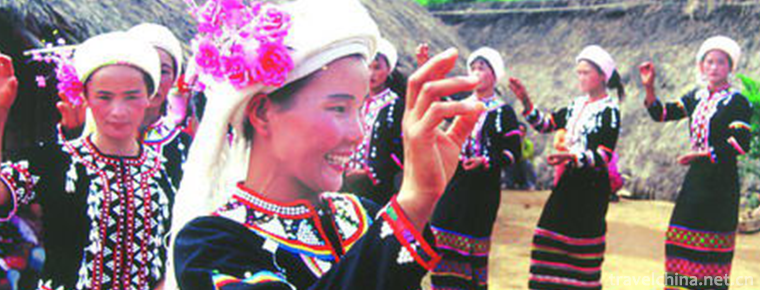
Lusheng Dance of Lahu Nationality
-
About Us
If you are interested in Chinese culture, Beautiful Scenery and Delicious Food, Welcome to China.
Views: 483 Time 2018-09-28 -
Green Lake Park
Cuihu Park is located at the foot of Luofeng Mountain in Kunming City
Views: 218 Time 2018-10-21 -
Dunhua Liudingshan Cultural Tourist Area
Dunhua Liudingshan Cultural Tourist Area is located in the South Bank of Mudanjiang River, 3 kilometers south suburb of Dunhua City
Views: 171 Time 2018-12-05 -
Tong li ancient town
Tongli Ancient Town belongs to Wujiang District, Suzhou City, Jiangsu Province. It was built in Song Dynasty. There are many gardens, temples, residences
Views: 286 Time 2018-12-06 -
Fish Swallow in Bazhen Fresh Soup
Ingredients: Six or two fish swallows are served well. Lentinus edodes, crab willow, Jinhua ham, clam, shrimp
Views: 222 Time 2019-03-27 -
Dongyang wood carving
Dongyang woodcarving, one of the Chinese folk carving arts, is named for its origin in Dongyang, Zhejiang Province. Dongyang woodcarving, together with Qingtian stone carving and Huangyang woodcarving
Views: 283 Time 2019-04-27 -
Construction Skills of Official Ancient Architecture
In the process of construction and maintenance of the Palace Museum ancient buildings, a complete set of traditional palace building construction techniques with strict shape has been formed on the ba
Views: 322 Time 2019-05-01 -
Ancient dance Lao Gu dance
Ancient dance, the meaning of "breaking through the barrier" in Li language, is called "ancestor-telling" in ancient books. The ancestor worship originated from the primitive socie
Views: 154 Time 2019-05-11 -
Yunnan Mengzi Crossing Bridge Rice noodles guo qiao mi xian
"Crossing bridge rice noodles" is a unique food in southern Yunnan. It originated in Mengzi City, Hani and Yi Autonomous Prefecture of Honghe. It has a history of more than 100 years. It wa
Views: 234 Time 2019-07-16 -
Mounting and repairing techniques
The mounting and repairing technique of ancient Chinese characters and paintings is a kind of traditional Chinese handicraft. It is used for restoration and restoration of ancient calligraphy and pain
Views: 376 Time 2019-08-10 -
Wenshu Temple
Wenshu Temple is located in Qingyang District of Chengdu City. It was founded in the Daye period of Sui Dynasty (605-617). In 1697, the 36th year of Kangxi raised funds to rebuild the temple, which was renamed Wenshu courtyard.
Views: 316 Time 2020-10-18 -
Dazhou landform
The terrain of Dazhou city is high in the Northeast (Daba Mountain Area) and low in the Southwest (Basin hilly area). The highest point is datuanbao, Jichang Township, Xuanhan County, with an altitude of 2458.3 meters; the lowest is Tianguan village, Wan
Views: 125 Time 2020-12-20
